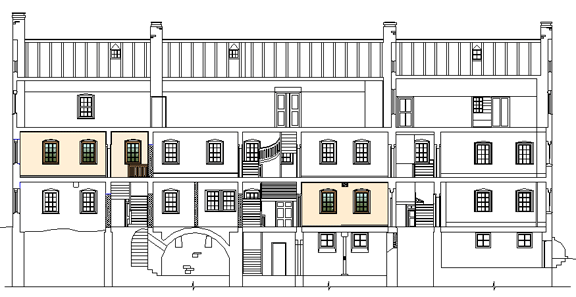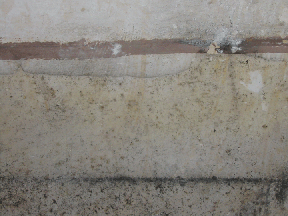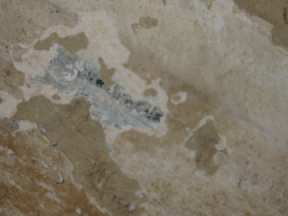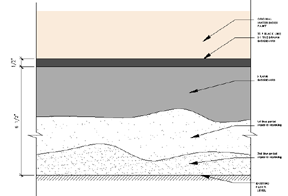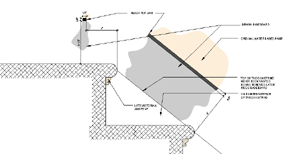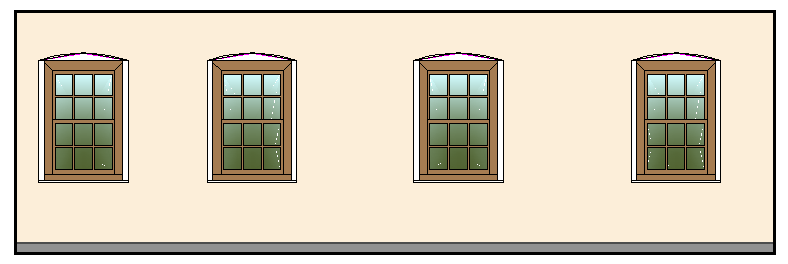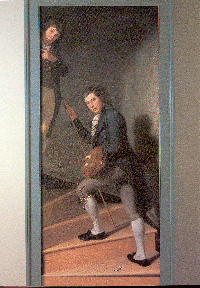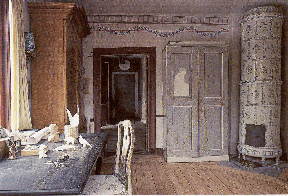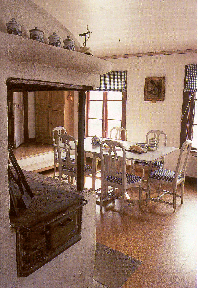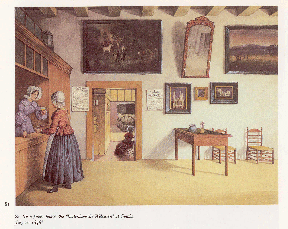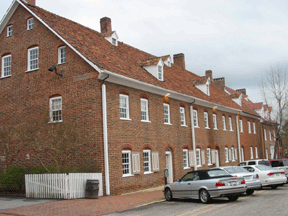
This report is an appendix to the Physical
investigation of the Single Sister’ House and dedicated to a
particular topic of the research: color and decoration of the
interior walls, which is extremely important for the restoration
design. This research was done in September 2004 and has to be
considered as a preliminary physical investigation of the general
principles of the interior decoration. The material that was found
cannot support the entire building restoration, but can be used
for a fragmental (partial) restoration of the Single Sisters’
House interior space.
The parts of the wooden baseboard were detached
from the walls in several rooms. Some of them were fastened with
cut nails with machine made hats, some of them used 20th
century round nails. Interior walls were painted with oil paint in
the 20th century, so the surface behind the bases is
now the only object that can be effectively used for paint
analyses of the 18-19th centuries time period.
Several layers of a water-based paint were found
behind the wooden bases. The most common color was white. Yellow
(the initial), peach (early 19th century) and light
gray (19th century) color layers were also found.
At the bottom of the walls the very original
(1786) drawn baseboards were found consisting a gray color stripe
along a floor. It is not possible to determine how
tall the drawn baseboards were, because the floor levels were
changed in almost all the rooms. Only at the original lending of
the Main stair the height of the drawn baseboard was determined to
be 5" in height. A 3/8" wide black (dark gray) line was drawn on
the top of the gray stripe. The black line plays a role of a
border between two color environments and at the same time
imitates a top molding of an imitated baseboard.
The drawn gray baseboard was not only a
decorative interior detail. Mainly it served to camouflage
possible dirt from shoes and from water during washing a floor or
a stair.
The dark red line above the floor was discovered
on the West part of the North wall in the second time period South stair
hall. It was drawn during the third quarter of the 19th
century, after demolition of the original South stair.
Other layers in the researched places did not
have drawn baseboards, i.e. a white or a light color of plastered
walls touched the floorboards.
The reconstruction of the finish for the rooms
is shown below.
Drawn baseboard was not an unusual decorative
element in the interiors of the 18th-19th
centuries. Attached genre-paintings of that time illustrate the
dark baseboards, drawn baseboards and
entire lack of them.
Wood baseboards were installed in the Single
Sisters’ house interiors in the second half of the 19th century.
It means that before the middle of the 19th century no
baseboards were applied to the interior walls. Furthermore, the
present research can draw another conclusion: in Salem’s cultural
environment all houses that were built before the mid of the 19th
century did not have wood baseboards.
Another important discovery during this research
concludes the pine floor and oak stair details were not finished
originally. Some of the pine details of the Main stair were
whitewashed with water based paint by 1840s.
Suggested additional research:
All the other parts of the walls; paying a
special attention to both (1786 and 1819) Saals and South and
Main stairs
Ceilings
Woodwork.
Selected bibliography.
1. Paint in America. The colors of
historic buildings. National Trust for Historic
Preservation. Washington D.C. 1994.
2. The Swedish Room by Sjoberg, Lars;
Sjoberg, Ursula; Snitt, Ingalill. NY, 1994
3. The World of Mary Ellen Best, by
Caroline Davidson. The Hogarth Press. London, 1985
Igor Kiselev
October 19, 2004
07.27.2003
|
![]()

